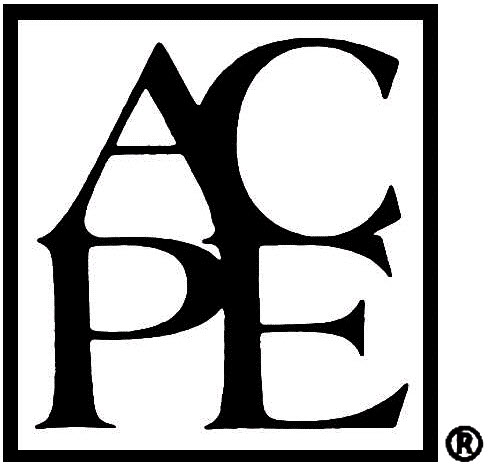Pharmacoeconomics in Healthcare: More Than Dollars
Pharmacy Administration CE for Pharmacists
Are you a Pharmacy Tech? Check out the Pharmacy Tech version of this course.
Course Summary
Pharmacoeconomics is a relatively new subset of economics in which researchers measure and value the outcomes of different healthcare interventions, including medications, medical procedures, medical devices, and many others. However, valuing healthcare interventions via pharmacoeconomic studies is not sufficient for real-world application and is typically combined with outcomes research. Outcomes from pharmacoeconomic research affect nearly every part of the pharmaceutical industry. The increasing national drug expenditure highlights the importance of pharmacoeconomics and outcomes research and rising healthcare costs year-over-year. This course discusses the four main analysis tools used to evaluate the cost and outcomes of medical interventions. After reviewing this CE, pharmacists and staff will be able to identify how they currently use the basics of pharmacoeconomics in their daily practice, improve their foundational understanding of pharmacoeconomics, and apply some of these evaluation methods to improve patient care.
Define pharmacoeconomics
Explain how pharmacoeconomics is used in healthcare
Differentiate analytical tools used in pharmacoeconomics
Review the clinical effects of weighing the costs, benefits, and harms of healthcare interventions
Course Syllabus
I. Introduction
II. Defining Pharmacoeconomics
III. Why Pharmacoeconomics is Important
IV. A Brief History of Pharmacoeconomics
V. The Importance of Pharmacoeconomic Research
1. National Drug Expenditure
2. Disease-specific Expenditure Example
VI. Analytical Tools Used in Pharmacoeconomics
1. Cost-Effectiveness Analysis
2. Cost-Utility Analysis
3. What is a QALY?
4. Cost-Benefit Analysis
5. Cost-Minimization Analysis
6. Determining Cost Parameters
VII. Applying HEOR in Practice
Clinical Efficacy vs. Drug Cost
VIII. Formulary Management and Study Perspectives
1. Formulary Management
2. Study Perspectives
IX. Pharmacist-led Case Examples
1. Community Pharmacist Example
2. Hospital Pharmacist Example
X. The Future of Pharmacoeconomics
XI. Summary
- Read the course objectives and faculty planner disclosure
- Read the course material
- Complete the post-test with a minimum score of 70% and complete the course evaluation form.
- Results are automatically submitted to CPE Monitor
Faculty Planner Disclosure
The following individuals were involved in developing this activity: Angel A. Rodriguez, PharmD, BCACP, and Pamela Sardo, PharmD, BS. Pamela Sardo was an employee of Rhythm Pharmaceuticals until March 2022 and has no conflicts of interest or relationships regarding the subject matter discussed. There are no financial relationships relevant to this activity to report or disclose by any of the individuals involved in the development of this activity.
Unlabeled Use Disclosures
The information provided in this course is general in nature and it is solely designed to provide participants with continuing education credit(s). This course and materials are not meant to substitute for the independent, professional judgment of any participant regarding that participant’s professional practice, including but not limited to patient assessment, diagnosis, treatment and/or health management. Medical and pharmacy practices, rules, and laws vary from state to state, and this course does not cover the laws of each state; therefore, participants must consult the laws of their state as they relate to their professional practice. Healthcare professionals, including pharmacists and pharmacy technicians, must consult with their employer, healthcare facility, hospital, or other organization, for guidelines, protocols, and procedures they are to follow. The information provided in this course does not replace those guidelines, protocols, and procedures but is for academic purposes only, and this course’s limited purpose is for the completion of continuing education credits. Participants are advised and acknowledge that information related to medications, their administration, dosing, contraindications, adverse reactions, interactions, warnings, precautions, or accepted uses are constantly changing, and any person taking this course understands that such person must make an independent review of medication information prior to any patient assessment, diagnosis, treatment and/or health management. Any discussion of off-label use of any medication, device, or procedure is informational only and such uses are not endorsed hereby. Nothing contained in this course represents the opinions, views, judgments, or conclusions of RxCe.com LLC. RxCe.com LLC is not liable or responsible to any person for any inaccuracy, error, or omission with respect to this course, or course material.
Computer Hardware/Software Requirements
Please ensure the device you plan to use meets these requirements and specifications:
- Operating System: Windows 7,8,10, or 11 /Mac OS X 10.9 or later/iOS/Android
- Supported Browsers: Microsoft Edge, Firefox, Google Chrome, Safari, Opera
- A connection to the internet
- For Live Webinars or Conferences: GoToWebinar application for iOS, Android, Mac, or PC. You cannot 'call into' a live conference.
Rating: 4.1/5
Based on the ratings of 157 customers
- Target Audience: Pharmacist
- Secondary Audiences: This educational activity is also for other healthcare professionals, such as nurses, physicians, or others who may be part of a healthcare team and may be interested in this educational topic. A healthcare team approach to patient care may be discussed in this activity, as applicable. No state board or professional organization has evaluated this activity to determine whether it meets the continuing education requirements of nurses, physicians, or other professions not listed under the “Target Audience” described above. Always verify with individual employers or supervisors whether they will accept this educational activity upon completion.
- Contact Hours: 2.0 (0.2 CEUs)
- Activity Release Date: 10/3/2023}
- Activity Expiration Date: 10/3/2026}
- Activity Type: Knowledge
- UAN: 0669-0000-23-167-H04-P
- Topic: Pharmacy Administration
- CeBroker Number: 20-1113916
Faculty:

RxCe.com, LLC is accredited by the Accreditation Council for Pharmacy Education as a provider of continuing pharmacy education.